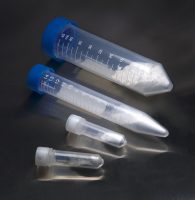According to a press release published March 1st, ASTM International formed a committee focusing on “creating technical standards and guidance materials for cannabis and its products and processes.” ASTM, founded in 1898, as the American Section of the International Association for Testing Materials, predates other standards organizations such as IEC (1906), ANSI (1918) and ISO (1947). ASTM International is a non-profit organization devoted to the development of international standards. For more than a century, ASTM has served as a leading venue for consumers, industry and regulators to work collaboratively under a balanced and consensus–based process to craft voluntary consensus standards.
 ASTM International meets the World Trade Organization (WTO) principles for developing international standards, and maintains the attributes outlined in the National Technology Transfer and Advancement Act (NTTAA) for a voluntary consensus standards development organization. ASTM International is known throughout a variety of industries for creating voluntary consensus standards for products, systems, services and materials. ASTM standards are used globally in research and development, product testing, quality systems, commercial transactions, and more.
ASTM International meets the World Trade Organization (WTO) principles for developing international standards, and maintains the attributes outlined in the National Technology Transfer and Advancement Act (NTTAA) for a voluntary consensus standards development organization. ASTM International is known throughout a variety of industries for creating voluntary consensus standards for products, systems, services and materials. ASTM standards are used globally in research and development, product testing, quality systems, commercial transactions, and more.

On January 18th, 2017, the American Public Health Association hosted thirteen industry stakeholders representing state laboratories, standards developers, research institution, academia, cultivation centers, auditors and software compliance providers, according to Lezli Engelking, founder of the Foundation of Cannabis Unified Standards (FOCUS), who is involved and familiar with the process. The planning meeting discussions included a summary of where the request was initiated, why a standards activity was necessary and the results of ASTM’s exploratory efforts. At the conclusion of the planning meeting, it was decided by vote, that ASTM should move forward with the activity.
On February 28th, 2017, roughly 60 stakeholders and cannabis industry representatives met at ASTM International’s headquarters in Conshohocken, Pennsylvania. The volunteer committee on cannabis, designated D37 by ASTM, is a result of inquiries flooding the company regarding cannabis since 2015, states the press release.
The committee will focus on six technical areas, forming subcommittees:
- Indoor and outdoor horticulture and agriculture,
- Quality management systems,
- Laboratory,
- Processing and handling,
- Security and transportation, and
- Personnel training, assessment, and credentialing.
Dr. Ralph Paroli, immediate past chairman of the board and director of R&D in measurement science and standards at the National Research Council of Canada, was voted to serve as the committee’s first chairman. “With its decades of experience in industries such as pharmaceuticals, medical devices, packaging, agriculture, pesticides, and more, ASTM International is the perfect place for standards development for the cannabis industry,” says Paroli.
Pending ASTM International board of directors’ approval (anticipated late April 2017), a shift of standards development efforts has been made from FOCUS to the ASTM International technical committee D37 on cannabis and its products and processes.
“FOCUS could not be more pleased by ASTM’s decision to further the development of internationally harmonized cannabis standards,” says Engelking. “This is desperately needed, and an enormous step in the right direction of legitimizing the cannabis industry. We are thrilled FOCUS standards will be included, and honored to be a part of this exciting process.” During this transition period, interested stakeholders can get directly involved through the FOCUS website and then follow directions provided by FOCUS.
According to Engelking, third-party, cannabis-specific certifications for cultivation, retail, extraction, infused products and laboratories are provided by FOCUS for cannabis businesses committed to providing safe, consistent and quality products. FOCUS certification helps businesses decrease liability and risks, maximize efficiency, reduce costs and differentiate their brands.
“FOCUS encourage all stakeholders to participate in this important process,” says Engelking. “ASTM has an incredible standards development system in place that allows for many different levels of participation.” During 2017, ASTM is offering free temporary memberships. After 2017, stakeholders will need to join as a participating member.














































